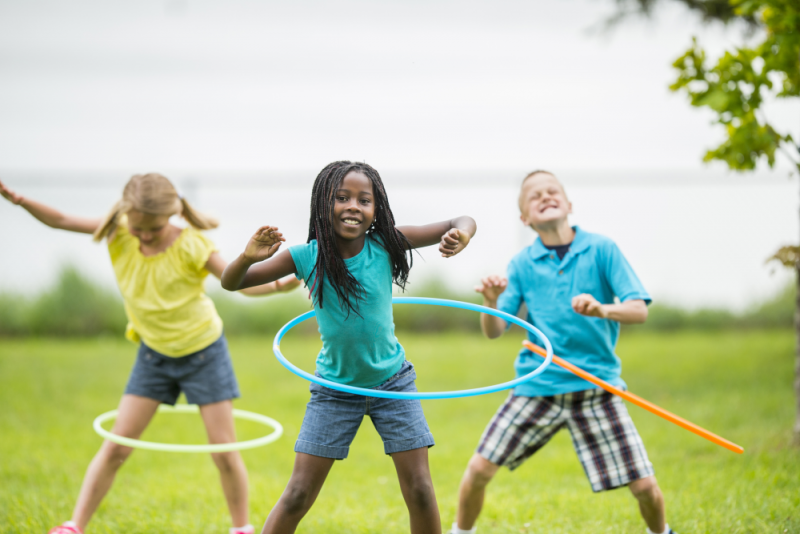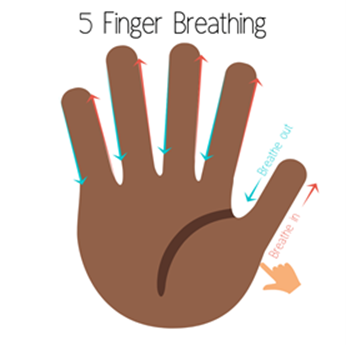Nicola Harvey shares four practical strategies to use in supporting children or young people who are experiencing anxiety.

Anxiety is a normal emotion and we all experience it from time to time. It only becomes a problem when anxiety persistently gets in the way of a child or young person living their best life.
In my previous blog, Understanding anxiety in children and young people, I explored what it means to experience anxiety, common forms and when it can become a problem, particularly in light of the Covid-19 pandemic.
In this blog, I want to share four practical strategies I have used to support children and young people experiencing anxiety.
As we know, every child is different so feel free to adapt these tools as necessary or use them alongside methods you may already be utilising.
Please note the strategies are not intended to substitute professional medical or counselling advice, so if you need any further support speak to your school’s mental health lead or another trained professional.
Firstly, it’s important for adults to normalise anxiety with children. When teachers, therapists and parents talk openly about their own anxious experiences whilst encouraging children to do the same, it builds emotional literacy, resilience, self-esteem and much more! When we reassure children that it’s ok to not be ok, it can help reduce the stigma surrounding mental health and puts the onus on the young person to develop self-regulation tools.
A simple way to normalise anxiety is to schedule Worry Time – a regular time slot for a young person to talk, write or draw what’s on their mind with a trusted non-judgemental adult. This can be an effective way of encouraging children to face their fears whilst getting any anxious thoughts and feelings off their chest. This does not have to be problem-solving activity; it can simply be a process of listening and creating a safe space for the young person to release the anxious thoughts and feelings weighing them down.
For more guidance, take a look at this resource from Sheffield Hallam University on how to set up worry time.
Cognitive behavioural therapy (CBT) is based on the concept that our thoughts, feelings and behaviours are interrelated and looks at therapeutic ways to change our thoughts and behaviours.
Mindfulness is the process of paying attention and being in the present moment in a non-judgemental way. This may be through meditation, movement, focusing on the breath or anything that connects us to focusing on the here and now.
Similar to CBT, research shows mindfulness to be an effective coping strategy for anxiety, reducing common behavioural, psychological and physical problems in children and young people (Hwang & Kearney, 2015) (Weisbaum, 2016).
Mindfulness-based cognitive therapy combines both practices and can be used to support the wellbeing of children, young people and adults. A simple and practical example is the STOPP technique, outlined in the table below.
| STOPP | Examples of activities which can be simplified |
|---|---|
| Stop | Take a moment to pause and step back from the situation. This can be by encouraging a young person to look at a calming object like a calm down jar, to shift their focus. |
| Take a breath | Encourage the young person to be aware of their breathing to help find a sense of calm from within. This can be connected to a breathing exercise like slowly counting to 5 as they breathe in and out. |
| Observe |
Develop self-inquiry skills without judgement and prompt the young person to observe one or some of their responses to the following.
|
| Pull back |
Put things into perspective by prompting the young person to think about the bigger picture.
|
| Proceed – practise what works |
When the young person is ready, encourage them to move forward and think about next steps.
|
When a person experiences anxiety, their breathing tends to become shallow or is at a faster pace. In contrast, when they become aware of their breathing and take slow and steady full breaths, it sends messages between the brain and the parasympathetic nervous system and enhances a more balanced state of calm in the mind and body.
The benefits of conscious breathing are endless, particularly as it can help reduce anxious thoughts, feelings and uncomfortable physiological sensations. A good way to remind children to practise conscious breathing is through easy to follow practical activities, including synchronised breathing apps like headspace and calm.
In my book Mindful Little Yogis, there are over 50 practical and inclusive guided breathing activities for children and young people, particularly for those with special educational needs. One of the activities I share is Five Finger Breathing – a great way for children to trace around their hands in sync with their breathing.

Image taken from The Calming Corner
For step by step guidance on how to do five finger breathing, take a look at Dr Pooky Knightsmith's video.
When we inform children and young people that the brain controls all parts of the body, including where our thoughts and feelings come from, it can help build emotional intelligence and be incredibly empowering. With this knowledge and understanding, rather than being consumed by anxiety in the ‘emotional brain’ (limbic system), a child can learn the importance of regulating their emotions using their ‘thinking brain’ (neocortex).
Dr Dan Siegel and Dr Tina Payne Bryson’s book The Whole Brain Child shares a simple method called the Upstairs Downstairs Brain to teach children that the emotional and thinking parts of the brain need to work together to help us feel balanced, calm and healthy. However, there are times when we may ‘flip our lid’ and big emotions are difficult to contain, so Siegel and Bryson share helpful ways to self-regulate (e.g. practising mindfulness) when big emotions like anxiety feel overwhelming.
Dr Hazel Harrison’s fascinating article on Hey Sigmund provides practical steps on how to adapt the 'upstairs downstairs brain' into teachable activities for the classroom environment.
If you need additional support for yourself or for a young person experiencing anxiety, please consult your school’s mental health lead, school nurse or a member of your senior leadership team. The strategies suggested in this blog are not intended to substitute professional medical or counselling advice.
Please also see below for further reading and supportive resources.